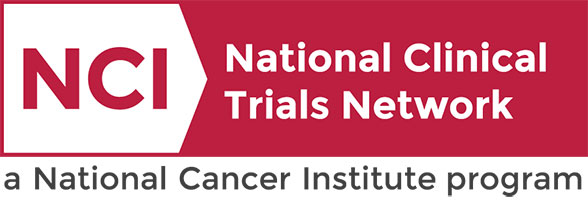A Safety, Tolerability, Pharmacokinetic, and Pharmacodynamic Study of VGA039 Following Intravenous or Subcutaneous Administration of Single Ascending Doses in Healthy Adults and
Adult Patients with von Willebrand Disease
Not Available
I
Wheeler, Allison
NCT05776069
NCBH2304-VEGA
REDUCE Post Approval Study - GORE CARDIOFORM Septal Occluder and Antiplatelet Medical Management for Reduction of Recurrent Stroke in Patients with Patent Foramen Ovale (PFO)
Not Available
Piana, Robert
NCT03821129
CRE-ARR0003
Intermediate-Size Population Expanded Access Program (EAP) for Ciltacabtagene Autoleucel (Cilta-Cel) Out-of-Specification (OOS) in Patients with Multiple Myeloma
Multiple Myeloma
Multiple Myeloma
Multiple Myeloma
N/A
Oluwole, Olalekan
NCT05346835
VICC-XDCTT24033
Open-Label Safety Study in Adults and Adolescents with Haemophilia A with and without FVIII Inhibitors Switching Directly from Emicizumab Prophylaxis to NNC0365-3769 (Mim8) Prophylaxis
Not Available
III
Walker, Shannon
NCT05878938
NCBH2302-FRONTIER5
MRI and 18F-Fluoromisonidazole PET/CT Scan for Assessing Tumor Hypoxia and Guiding Adaptive Radiation Therapy in Patients With Head and Neck Cancer or Brain Metastases
Miscellaneous
Miscellaneous
This clinical trial is studying how well magnetic resonance imaging (MRI) in combination with 18F-fluoromisonidazole (18F-FMISO) positron emission tomography (PET)/computed tomography (CT) scans works in assessing a decrease in the amount of oxygen (hypoxia) in tumor cells and in guiding adaptive radiation treatment in patients with head and neck cancer or cancer that has spread to the brain from where it first started (brain metastasis). Both head and neck cancer and brain metastases can be treated with radiation. Previous research studies have shown that the amount of oxygen that goes towards cancer cells prior to their radiation treatments predicts how the cancer cells will respond to radiation treatment. MRI is a type of imaging technique that uses radio waves and large magnets to produce detailed images of areas inside the body. 18F-FMISO is a radioactive substance that binds to hypoxic tumor cells and emits radiation, allowing the tumor cells to be visualized using PET/CT, which is an imaging technique that combines PET and CT in a single machine. It is used to make detailed, computerized images of inside the body. By combining MRI with 18F-FMISO PET/CT, researchers may be able to develop an MRI sequence that can be used to evaluate hypoxia in tumor cells and predict response to treatment in patients with head and neck cancer or brain metastases.
Miscellaneous
Early I
De vis, Jill
NCT05996432
VICC-EDMDT23195
Educational Telehealth Program for the Delivery of Care to Cancer Patients in Rural Communities, ENCORE Study
Miscellaneous
Miscellaneous
This clinical trial evaluates the clinical effectiveness of a multi-level telehealth-based intervention for cancer patients in rural communities. Rural residents face limited accessibility to cancer treatment and supportive care services, transportation barriers, and financial issues. Cancer Thriving and Surviving is an evidence-based self-management intervention with demonstrated efficacy across numerous chronic health conditions with dissemination across the US, inclusive of rural communities. This trial evaluates whether the evidence-based Cancer Thriving and Surviving intervention delivered through telehealth among rural patients may improve patient outcomes.
Miscellaneous
N/A
Friedman, Debra
NCT04758338
VICCPED2013
Impact of Indwelling Tunneled Pleural Drainage Systems (Gravity or Vacuum Based) on Pain in Patients with Recurrent Pleural Effusions
Lung
Lung
This trial studies the impact of indwelling tunneled pleural drainage systems (gravity or vacuum based) on pain in patients with plural effusion that has come back (recurrent). Vacuum drainage and gravity drainage are two commonly used drainage methods. Studying the best drainage methods may help future patients undergoing indwelling tunneled pleural catheter placement.
Lung
N/A
Maldonado, Fabien
NCT03831386
VICCTHO19118
Identifying Best Approach in Improving Quality of Life and Survival after a Donor Stem Cell Transplant in Older, Medically Infirm, or Frail Patients with Blood Diseases
Hematologic
Hematologic
This phase II/III trial studies the best approach in improving quality of life and survival after a donor stem cell transplant in older, weak, or frail patients with blood diseases. Patients who have undergone a transplant often experience increases in disease and death. One approach, supportive and palliative care (SPC), focuses on relieving symptoms of stress from serious illness and care through physical, cultural, psychological, social, spiritual, and ethical aspects. While a second approach, clinical management of comorbidities (CMC) focuses on managing multiple diseases, other than cancer, such as heart or lung diseases through physical exercise, strength training, stress reduction, medication management, dietary recommendations, and education. Giving SPC, CMC, or a combination of both may work better in improving quality of life and survival after a donor stem cell transplant compared to standard of care in patients with blood diseases.
Hematologic
II/III
Jayani, Reena
NCT03870750
VICC-IDCTT23500
Long-term Follow-up Study for Participants of Kite-Sponsored Interventional Studies Treated With Gene-Modified Cells
Multiple Cancer Types
The goal of this clinical study is to learn more about the long-term safety, effectiveness
and prolonged action of Kite study drugs, axicabtagene ciloleucel, brexucabtagene autoleucel,
KITE-222, KITE-363, KITE-439, KITE-585, and KITE-718, in participants of Kite-sponsored
interventional studies.
and prolonged action of Kite study drugs, axicabtagene ciloleucel, brexucabtagene autoleucel,
KITE-222, KITE-363, KITE-439, KITE-585, and KITE-718, in participants of Kite-sponsored
interventional studies.
Hematologic,
Leukemia,
Lymphoma,
Pediatric Leukemia,
Pediatric Lymphoma
N/A
Kassim, Adetola
NCT05041309
VICCCTT2170



